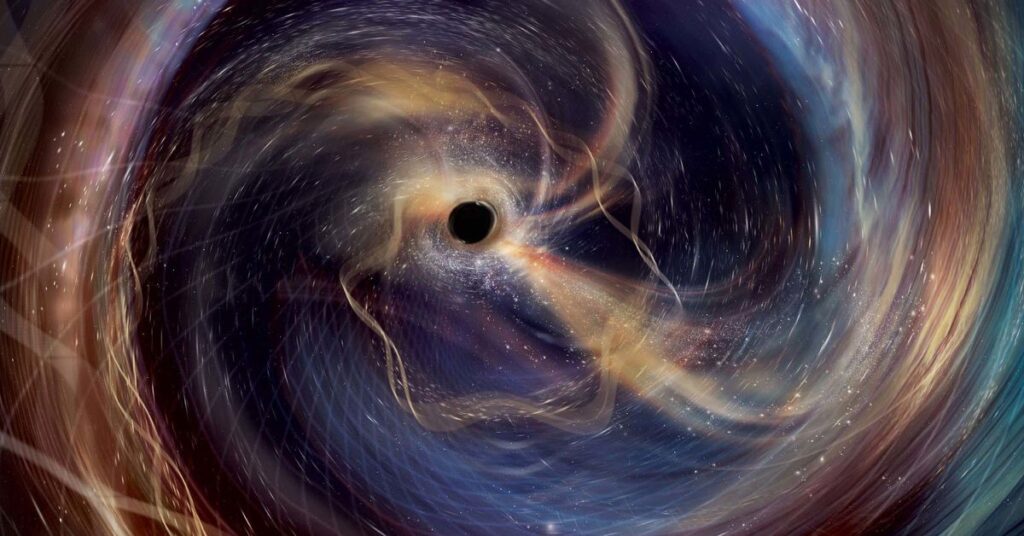
Astronomers have observed a collision between two black holes with unprecedented clarity, providing the clearest evidence yet of the nature of these cosmic phenomena and affirming predictions by Albert Einstein and Stephen Hawking. The event, known as GW250114, was first detected in January using the Laser Interferometer Gravitational-Wave Observatory (LIGO), a pair of identical instruments located in Livingston, Louisiana, and Hanford, Washington.
The instruments recorded gravitational waves, faint ripples in space-time produced by the collision of the black holes. These waves, first predicted in 1915 as part of Einstein’s theory of relativity, are the only means to detect black hole collisions from Earth. Despite Einstein’s skepticism about the feasibility of detecting these waves, LIGO first recorded them in September 2015, a discovery that later earned a Nobel Prize for the scientists who contributed to this groundbreaking technology.
The Significance of GW250114
The newly observed black holes were each approximately 30 to 35 times the mass of the sun and were spinning slowly, according to Maximiliano Isi, an assistant professor of astronomy at Columbia University. Isi, who led a study for the LIGO-Virgo-KAGRA Collaboration on the GW250114 data, noted that the black holes were about 1 billion light-years away, orbiting each other in nearly perfect circles.
“The resulting black hole was around 63 times the mass of the sun, spinning at 100 revolutions per second,” Isi explained. These characteristics mirror the first detection from a decade ago, but with enhanced clarity due to improved instrumentation.
Einstein’s Theories in Action
LIGO, along with its sister instruments Virgo in Italy and KAGRA in Japan, is managed by a global scientific community of about 1,600 researchers. The observatory detects minute stretches in space caused by gravitational waves, described by Isi as “a change in distance that is 1,000 times smaller than the radius of the nucleus of an atom.” To date, scientists have observed over 300 black hole mergers using this technology.
Recent upgrades to LIGO’s components, including its lasers and mirrors, have significantly increased its precision, making the latest observations over three times more accurate than those of a decade ago. This clarity has allowed astronomers to confirm longstanding predictions about black holes.
“Yes, black holes are very mysterious, complex and have important implications to the evolution of the universe,” Isi said, “but mathematically we think they should be fully described by just two numbers. Everything there is to know about them should come from how big the black hole is — or what its mass is — and how fast it’s rotating.”
Hawking’s Theorem and Its Implications
The second prediction confirmed by GW250114 relates to Stephen Hawking’s 1971 theorem, which posits that when two black holes merge, the resulting surface area must be equal to or greater than that of the original black holes. Isi explained, “It’s a profound, but very simple theorem that says the total surface area of a black hole can never decrease — it can only get bigger or stay the same.”
Earlier LIGO observations provided tentative confirmations, but the clarity of the new signal offers unparalleled confidence. “Because we’re able to identify the portion of the signal that comes from the black holes early on, as they are separated from each other, we can infer their areas from that,” Isi noted. This confirmation could have significant implications for physics, particularly in unifying general relativity with quantum mechanics.
“If Hawking were alive, he would have revelled in seeing the area of the merged black holes increase,” said Kip Thorne, a Nobel laureate for LIGO contributions, reflecting on the late physicist’s legacy.
A New Era in Astronomy
Gravitational waves are notoriously weak, making their detection akin to finding a needle in a haystack, according to Emanuele Berti, a professor of physics and astronomy at Johns Hopkins University. He likened LIGO’s detectors to “hearing aids” that have been refined over the years to enhance clarity.
“We can now test fundamental principles of gravity that we could not test ten years ago,” Berti said. The level of detail in the GW250114 collision allows scientists to confirm that the final object aligns with Einstein’s predictions, a development described as “terribly exciting.”
Leor Barack, a professor of mathematical physics at the University of Southampton, emphasized the significance of the study, noting that among the more than 300 black-hole merger events recorded by LIGO, this one stands out as “particularly spectacular.”
Macarena Lagos, an assistant professor at the Institute of Astrophysics of the Universidad Andrés Bello in Chile, highlighted the study’s milestone status in gravitational wave astronomy. She noted that the detection of a second tone in the “ringing” black hole is particularly significant, demonstrating the success of LIGO’s ongoing improvements.
“While current tests of gravity still have broad uncertainties, this work lays the groundwork for future detections of even better quality expected in the coming years,” Lagos said.
As LIGO continues to refine its capabilities, the future promises even more precise tests of our understanding of space-time and gravity, potentially unlocking new insights into the universe’s most enigmatic phenomena.





